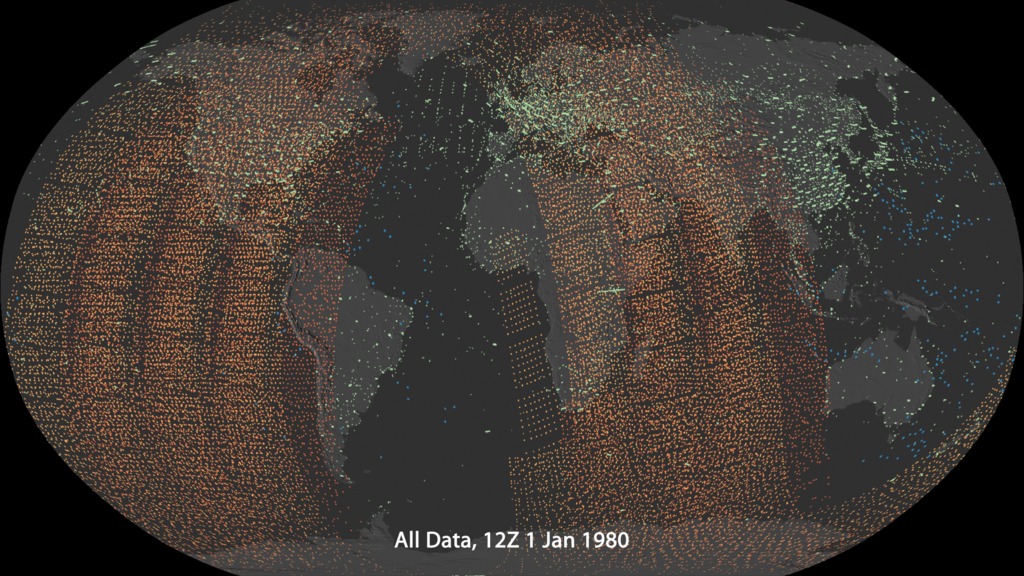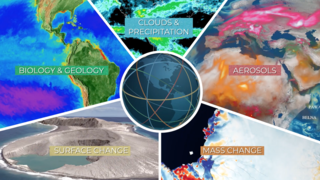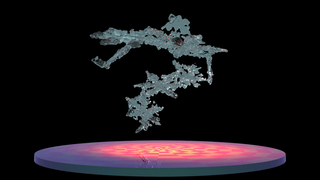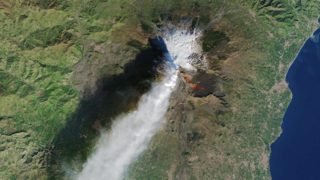Earth
ID: 4654
The Global Modeling and Assimilation Office (GMAO) at NASA Goddard Space Flight Center uses the Goddard Earth Observing System (GEOS) modeling and data assimilation system to produce gridded estimates of the atmospheric state by combining short-term forecasts with observations from numerous observing systems.
While the GEOS system is under continual development, it is periodically frozen and used to reprocess the modern satellite era, which begins in about 1980. This period specifically has been the focus of the second version of the Modern-Era Retrospective analysis for Research and Applications (MERRA-2).
The modern satellite era in the context of MERRA-2 stems from the launch of the NASA/NOAA Television InfraRed Observational Satellite N-series (TIROS-N) satellite. This satellite served as the space platform for the first of the TIROS Operational Vertical Sounder (TOVS) series, which included TIROS-N and NOAA-6 through NOAA-14. The series of TOVS observations included global infrared and microwave radiance observations that provided the first comprehensive space-based observations that served as the remotely sensed backbone of the assimilation system. These observations, along with wind estimates from geostationary satellites and the global surface and upper air conventional observing network (e.g. surface reporting stations, radiosondes, aircraft measurements) provide the observations for the beginning of MERRA-2 in 1980.
The observing system has advanced substantially since the launch of TIROS-N. Both satellite and conventional observations have increased in both quality and quantity over the course of the past four decades. In 1980, the median number of observations assimilated over a six hour period was 175,000. In 2018, this number has approached 5 million. The transition from the TOVS to the ATOVS (Advanced TOVS) observing system, which began in 1998 with the launch of the NOAA-15 platform, provided better horizontal and vertical resolution, along with improved observational quality. NASA’s Atmospheric Infrared Sounder (AIRS) instrument on the EOS-Aqua spacecraft provided yet another major advance in remote sensing of Earth, providing the first well-calibrated hyperspectral infrared radiance observations of the atmosphere, leading to a massive increase in the number of observations available to constrain the system. Designed as a research instrument, AIRS has been adopted by international operational weather prediction centers in their analysis and forecasting systems and also provides a key part of the meteorological observing system for MERRA-2. The demonstrable value of NASA’s AIRS observations also provided the impetus for developing hyperspectral infrared radiance instruments by the weather agencies, with the Infrared Atmospheric Sounding Interferometers (IASI) on the EUMETSAT Metop spacecraft and the Cross-track Infrared Sounders (CrIS) on the NASA-NOAA Suomi-NPP and JPSS platforms providing massive boosts in the number of available observations for use in weather analysis and forecasting. These measurements all provide critical inputs to the observing system used in MERRA-2.
One of the fundamental scientific goals of the GMAO reanalysis projects is to provide the optimal estimate atmospheric state in a manner that is consistent over time. These animations illustrate how different the observing system were in 1980 compared to today. On the one hand, these animations demonstrate the critical role that NASA has played in developing the observing systems that are used in satellite measurements, including the enhancements of the spacecraft observations between 1980 and the present time. They also highlight one of the great challenges in producing consistent long-term records of the atmospheric state in MERRA-2 and other reanalyses: technological advances lead to larger numbers of higher quality observations. Even though the underlying assimilation systems remain frozen over time, the great challenge is to overcome the impacts of an ever improving suite of observations.

Evolution of the Meteorological Observing System in the MERRA-2 Reanalysis
While the GEOS system is under continual development, it is periodically frozen and used to reprocess the modern satellite era, which begins in about 1980. This period specifically has been the focus of the second version of the Modern-Era Retrospective analysis for Research and Applications (MERRA-2).
The modern satellite era in the context of MERRA-2 stems from the launch of the NASA/NOAA Television InfraRed Observational Satellite N-series (TIROS-N) satellite. This satellite served as the space platform for the first of the TIROS Operational Vertical Sounder (TOVS) series, which included TIROS-N and NOAA-6 through NOAA-14. The series of TOVS observations included global infrared and microwave radiance observations that provided the first comprehensive space-based observations that served as the remotely sensed backbone of the assimilation system. These observations, along with wind estimates from geostationary satellites and the global surface and upper air conventional observing network (e.g. surface reporting stations, radiosondes, aircraft measurements) provide the observations for the beginning of MERRA-2 in 1980.
The observing system has advanced substantially since the launch of TIROS-N. Both satellite and conventional observations have increased in both quality and quantity over the course of the past four decades. In 1980, the median number of observations assimilated over a six hour period was 175,000. In 2018, this number has approached 5 million. The transition from the TOVS to the ATOVS (Advanced TOVS) observing system, which began in 1998 with the launch of the NOAA-15 platform, provided better horizontal and vertical resolution, along with improved observational quality. NASA’s Atmospheric Infrared Sounder (AIRS) instrument on the EOS-Aqua spacecraft provided yet another major advance in remote sensing of Earth, providing the first well-calibrated hyperspectral infrared radiance observations of the atmosphere, leading to a massive increase in the number of observations available to constrain the system. Designed as a research instrument, AIRS has been adopted by international operational weather prediction centers in their analysis and forecasting systems and also provides a key part of the meteorological observing system for MERRA-2. The demonstrable value of NASA’s AIRS observations also provided the impetus for developing hyperspectral infrared radiance instruments by the weather agencies, with the Infrared Atmospheric Sounding Interferometers (IASI) on the EUMETSAT Metop spacecraft and the Cross-track Infrared Sounders (CrIS) on the NASA-NOAA Suomi-NPP and JPSS platforms providing massive boosts in the number of available observations for use in weather analysis and forecasting. These measurements all provide critical inputs to the observing system used in MERRA-2.
One of the fundamental scientific goals of the GMAO reanalysis projects is to provide the optimal estimate atmospheric state in a manner that is consistent over time. These animations illustrate how different the observing system were in 1980 compared to today. On the one hand, these animations demonstrate the critical role that NASA has played in developing the observing systems that are used in satellite measurements, including the enhancements of the spacecraft observations between 1980 and the present time. They also highlight one of the great challenges in producing consistent long-term records of the atmospheric state in MERRA-2 and other reanalyses: technological advances lead to larger numbers of higher quality observations. Even though the underlying assimilation systems remain frozen over time, the great challenge is to overcome the impacts of an ever improving suite of observations.

Used Elsewhere In
Visualization Credits
Trent L. Schindler (USRA): Visualizer
Steven Pawson (NASA/GSFC): Scientist
Will McCarty (NASA/GSFC): Scientist
Steven Pawson (NASA/GSFC): Scientist
Will McCarty (NASA/GSFC): Scientist
Please give credit for this item to:
NASA's Scientific Visualization Studio
NASA's Scientific Visualization Studio
Short URL to share this page:
https://svs.gsfc.nasa.gov/4654
Keywords:
SVS >> Hyperwall
NASA Science >> Earth
NASA Earth Science Focus Areas >> Atmospheric Composition
https://svs.gsfc.nasa.gov/4654
Keywords:
SVS >> Hyperwall
NASA Science >> Earth
NASA Earth Science Focus Areas >> Atmospheric Composition















